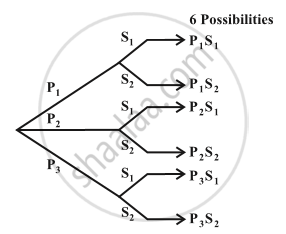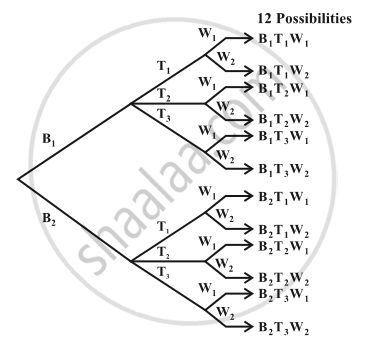Topics
Sets and Relations
- Introduction of Set
- Representation of a Set
- Intervals
- Types of Sets
- Operations on Sets
- Relations of Sets
- Types of Relations
Functions
- Concept of Functions
- Types of Functions
- Representation of Function
- Graph of a Function
- Fundamental Functions
- Algebra of Functions
- Composite Function
- Inverse Functions
- Some Special Functions
Complex Numbers 33
- Introduction of Complex Number
- Imaginary Number
- Concept of Complex Numbers
- Conjugate of a Complex Number
- Algebraic Operations of Complex Numbers
- Square Root of a Complex Number
- Solution of a Quadratic Equation in Complex Number System
- Cube Root of Unity
Sequences and Series
- Concept of Sequences
- Geometric Progression (G.P.)
- General Term Or the nth Term of a G.P.
- Sum of the First n Terms of a G.P.
- Sum of Infinite Terms of a G. P.
- Recurring Decimals
- Harmonic Progression (H. P.)
- Types of Means
- Special Series (Sigma Notation)
Locus and Straight Line
- Locus
- Equation of Locus
- Line
- Equations of Lines in Different Forms
- General Form Of Equation Of Line
Determinants
- Determinants
- Properties of Determinants
- Application of Determinants
- Determinant method
- Consistency of Three Linear Equations in Two Variables
- Area of a Triangle Using Determinants
- Collinearity of Three Points
Limits
- Definition of Limit of a Function
- Algebra of Limits
- Evaluation of Limits
- Direct Method
- Factorization Method
- Rationalization Method
- Limits of Exponential and Logarithmic Functions
Continuity
- Continuous and Discontinuous Functions
- Continuity of a Function at a Point
- Definition of Continuity
- Continuity from the Right and from the Left
- Properties of Continuous Functions
- Continuity in the Domain of the Function
- Examples of Continuous Functions Whereever They Are Defined
Differentiation
- The Meaning of Rate of Change
- Definition of Derivative and Differentiability
- Derivative by the Method of First Principle
- Rules of Differentiation (Without Proof)
- Applications of Derivatives
Partition Values
- Concept of Median
- Partition Values
- Quartiles
- Deciles
- Percentiles
- Relations Among Quartiles, Deciles and Percentiles
- Graphical Location of Partition Values
Measures of Dispersion
- Measures of Dispersion
- Range of Data
- Quartile Deviation (Semi - Inter Quartile Range)
- Variance and Standard Deviation
- Standard Deviation for Combined Data
- Coefficient of Variation
Skewness
- Skewness
- Asymmetric Distribution (Positive Skewness)
- Asymmetric (Negative Skewness)
- Measures of Skewness
- Karl Pearson’S Coefficient of Skewness (Pearsonian Coefficient of Skewness)
- Features of Pearsonian Coefficient
- Bowley’s Coefficient of Skewness
Bivariate Frequency Distribution and Chi Square Statistic
- Bivariate Frequency Distribution
- Classification and Tabulation of Bivariate Data
- Marginal Frequency Distributions
- Conditional Frequency Distributions
- Categorical Variables
- Contingency Table
- Chi-Square Statistic ( χ2 )
Correlation
- Correlation
- Concept of Covariance
- Properties of Covariance
- Concept of Correlation Coefficient
- Scatter Diagram
- Interpretation of Value of Correlation Coefficient
Permutations and Combinations
- Introduction of Permutations and Combinations
- Fundamental Principles of Counting
- Concept of Addition Principle
- Concept of Multiplication Principle
- Concept of Factorial Function
- Permutations
- Permutations When All Objects Are Distinct
- Permutations When Repetitions Are Allowed
- Permutations When All Objects Are Not Distinct
- Circular Permutations
- Properties of Permutations
- Combination
- Properties of Combinations
Probability
- Introduction of Probability
- Types of Events
- Algebra of Events
- Elementary Properties of Probability
- Addition Theorem of Probability
- Conditional Probability
- Multiplication Theorem on Probability
- Independent Events
Linear Inequations
- Linear Inequality
- Solution of Linear Inequality
- Graphical Representation of Solution of Linear Inequality in One Variable
- Graphical Solution of Linear Inequality of Two Variable
- Solution of System of Linear Inequalities in Two Variables
Commercial Mathematics
- Percentage
- Profit and Loss
- Simple and Compound Interest (Entrance Exam)
- Depreciation
- Partnership
- Goods and Service Tax (GST)
- Shares and Dividends
- Tree Diagram
- Addition Principle
- Multiplication principle
Notes
Let us consider the following problem. Mohan has 3 pants and 2 shirts. How many different pairs of a pant and a shirt, can he dress up with? There are 3 ways in which a pant can be chosen, because there are 3 pants available. Similarly, a shirt can be chosen in 2 ways. For every choice of a pant, there are 2 choices of a shirt. Therefore, there are 3 × 2 = 6 pairs of a pant and a shirt.
Let us name the three pants as `P_1, P_2 , P_3` and the two shirts as `S_1, S_2`. Then, these six possibilities can be illustrated in the Fig.
Let us consider another problem of the same type.
Sabnam has 2 school bags, 3 tiffin boxes and 2 water bottles. In how many ways can she carry these items (choosing one each).
A school bag can be chosen in 2 different ways. After a school bag is chosen, a tiffin box can be chosen in 3 different ways. Hence, there are 2 × 3 = 6 pairs of school bag and a tiffin box. For each of these pairs a water bottle can be chosen in 2 different ways. Hence, there are 6 × 2 = 12 different ways in which, Sabnam can carry these items to school. If we name the 2 school bags as `B_1, B_2`, the three tiffin boxes as `T_1, T_2, T_3` and the two water bottles as `W_1, W_2`, these possibilities can be illustrated in the Fig.

“If an event can occur in m different ways, following which another event can occur in n different ways, then the total number of occurrence of the events in the given order is m×n.”
In the first problem, the required number of ways of wearing a pant and a shirt was the number of different ways of the occurence of the following events in succession:
(i) the event of choosing a pant
(ii) the event of choosing a shirt.
In the second problem, the required number of ways was the number of different ways of the occurence of the following events in succession:
(i) the event of choosing a school bag
(ii) the event of choosing a tiffin box
(iii) the event of choosing a water bottle.
Here, in both the cases, the events in each problem could occur in various possible orders. But, we have to choose any one of the possible orders and count the number of different ways of the occurence of the events in this chosen order.
